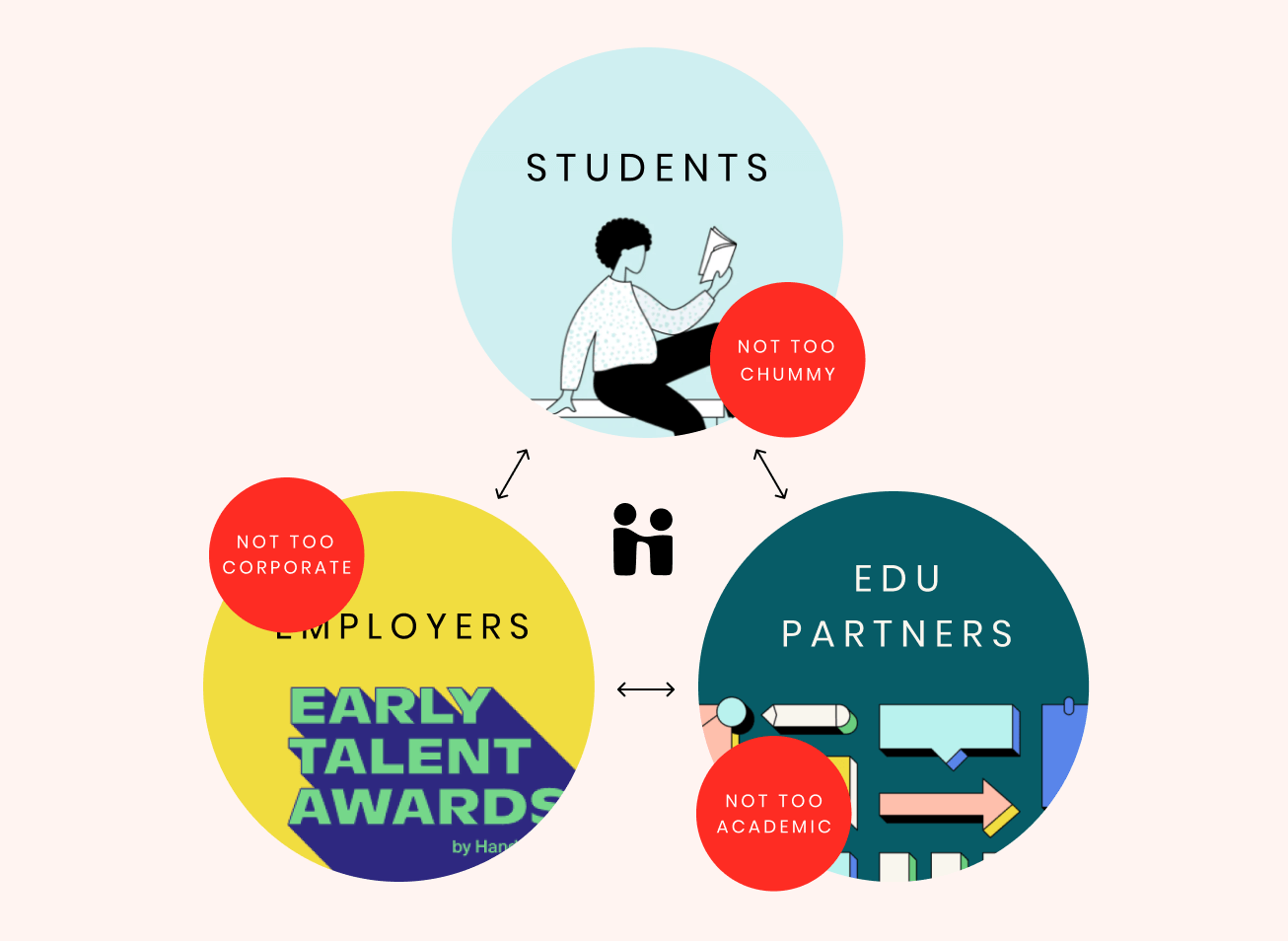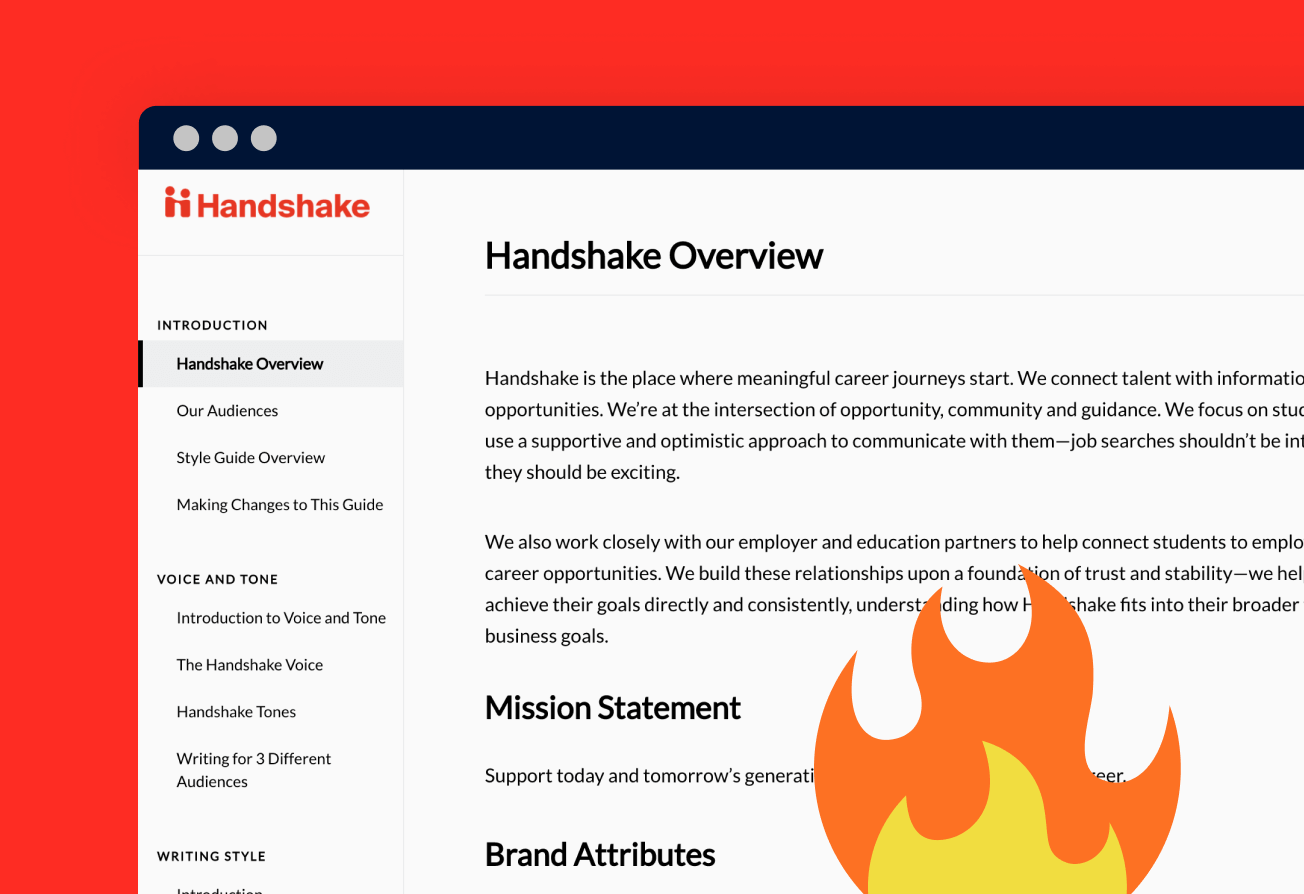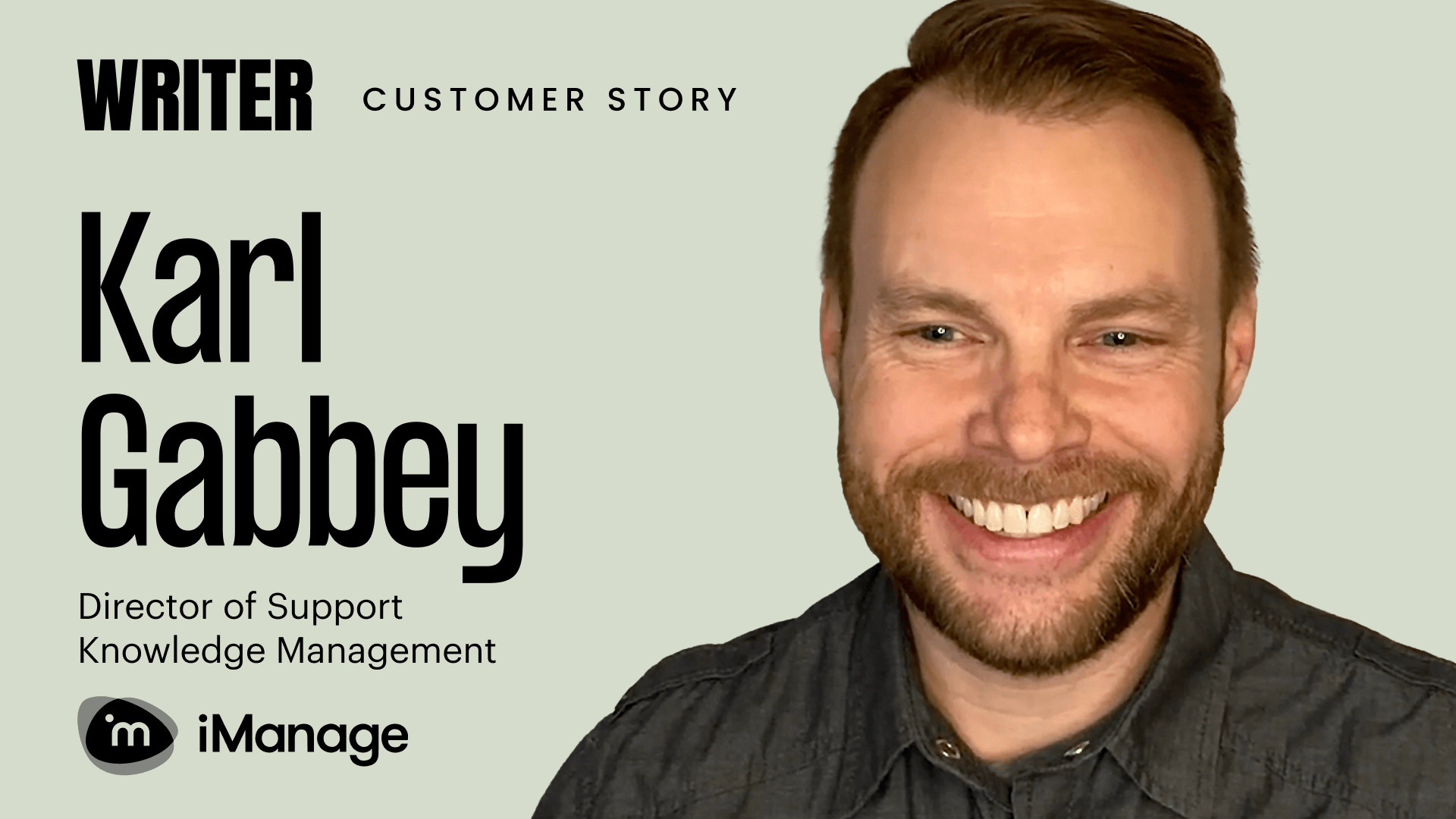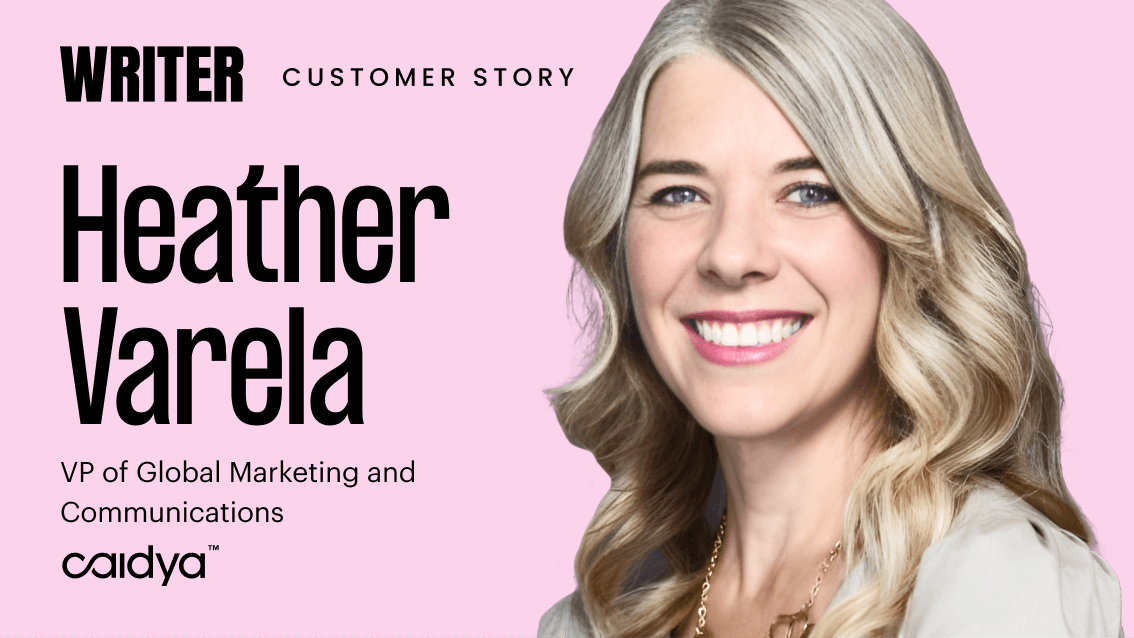- story – 10 min read
- VIDEO – 26 min watch
- AUDIO – 26 min listen
How Maria Romanovsky of Handshake gets college students, education partners, and employers on the same page

Listen to Maria’s story or read the transcript
Writer is the full-stack generative AI platform for enterprises. We make it easy for organizations to adopt AI apps and workflows that deliver quantifiable ROI quickly.
Writer helps organizations build highly-customized AI apps that compress entire business processes, support complex use cases, and infuse work with company intelligence. Our enterprise-grade platform can be deployed flexibly, keeps your data private, and adheres to global privacy laws and security standards. Leading enterprises choose Writer, including Vanguard, Intuit, L’Oreal, Accenture, and Kenvue.
We spoke with Maria, a Writer customer, about her role at Handshake bringing together a writers’ room for their company and evangelizing a consistent content strategy across product, sales, marketing, and support teams.
Content strategy for a three-sided marketplace
Even though we have writers for three different audiences — the student audience writers, the EDU [educational institutes] writers, and the employer writers — we have to write as if the other two audiences are looking over our shoulder. So when we’re talking to students, we can’t be too chummy. In case employers look at that communication and go, that’s not professional. And vice versa.
If we’re talking to employers, we don’t want to be corporate and scare off the students. So a lot of the challenge is, how do we calibrate those different components of language and how do we develop the Handshake voice, and then work on the different tones for the three different audiences.

Building the style guide
We had a style guide, but it was very bare-bones. It didn’t really address the three different audiences. Most people didn’t know we had a style guide, so that was another problem. And any time it was brought up, someone had to go and dig in and pull it out. So I said, okay, we need to start documenting these things. Really quickly, I noticed that the Google Doc style guide was getting out of control. I think it was something like a hundred pages. We had this really unwieldy doc that’s comprehensive but very difficult to use, especially for non-writers.
And we have a lot of non-writers writing content because we’re a startup and we move fast. And it’s all-hands-on-deck. So I started looking into solutions and found Writer and it’s been amazing. We could get our style guide into handshake.styleguide.com. Just so much easier to share than a Google Doc. It’s so much easier to navigate. There are templates for everything. So it was really easy for me to put it all together and then get input.
When we first launched it to leadership, our VP of Student Product responded with, “this style guide is lit.” So that was super, super exciting.
It’s easy to use and the Writer plugin just makes it so easy for our writers. Basically, all of our writers now have a real-time managing editor, so we don’t have to go back and edit everything and make sure that it follows our style. It’s done in real-time with the solution.

“We need this copy” = 😠😠😠
When I talk about content strategy, I usually say it’s where design was 20 years ago. Designers used to get handed products that were built by engineers and product managers and were told, make them pretty. When I started in content strategy, it was a lot of hey, we need this copy.
But I think the shift that is super exciting is really seeing content as a UX partner and I’ve definitely started experiencing that. How a company communicates with their customer at every single point is super important — it really matters and needs to be consistent. If you’re a user going from marketing to sales to product to support, you want to feel like that company is a single entity.
At its core, content strategy really identifies and executes on what is the best way to connect with people, inform them, and then influence their behavior. And if you involve a content strategist early, they can help make sense of concepts and create taxonomies around that. They can organize information based on a cohesive user education strategy and then also work with design to really harmonize language. And so it’s no longer okay that at the very end of the conveyor belt to say, write this, this is the information we want there.
Self-service content strategy
Everyone’s creating content at Handshake, right? Whether it’s internal, external, emails or sales teams. And they’re not thinking necessarily about the different content elements. That’s my job, but I can’t be in all places at once. I can’t proofread and rewrite every single email that goes out. I can’t look at every support ticket. But I’ve started looking at the different patterns, been looking at areas of confusion internally, and I’m making sure there are resources for everything in our style guide, acting as a final checklist. Are you using X, Y, and Z terminology over A,B,C? Are you using contractions? You know, and the reasoning behind that? So I was putting together one-pagers to share out.
And then with Writer, it was a godsend because basically I don’t have to do that. I can just get my team to install the plugin. And they have a built-in editor. So I basically get to clone myself, which is really nice and super convenient for a lot of that editing work. I would love to have a managing editor!
Having it built-in and automated is actually almost better than having a single person, because it really, really scales versus having everything go through an editorial process.
I found people to be pretty receptive. They really value what content strategy has brought to the company. I’m definitely seeing the value as we’re reworking the information architecture and doing a lot of user testing around that.
The “aha moment” for the writers’ group
When this all came together it was very exciting. In our writers’ group, there was an aha-moment for everyone. [Before we had an overall content style guide for our three audiences] our EDU writers would be like, this is what the universities want to hear, this is how we’ve always communicated with them. And same with employers writers. And when we started having more of these calibration meetings, there was one [content] piece in particular that was geared for employers. But it was very jargony, and though jargon is not always bad, I kind of imagined like, okay, if I were a student and I had come across this, how would I feel? Would I have felt like a commodity? I just imagined myself in their position reading that, and it was a little bit jarring. Like, this is what recruiters think of me?
So that was an incredible moment where we all kind of looked at each other and we’re like, we need to take all of that into account. And then same thing with the Students’ side. If you’re trying to market to the younger generation and using slang to try to connect with them, it can easily come off inauthentic.
And if you go too far in speaking that language, you’re not necessarily doing them the service of pulling them into the working world and really connecting them with employers and helping them learn the communication skills and the words that they need in order to connect with these employers and ultimately find a job and build a career.
So a lot of thought goes into where do we lean on terminology and concepts that each of the audiences already knows and where are the areas for education.
Words on words: “decline” vs “reject”
When employers say decline, they mean that the candidate declined the offer. And then rejected means that the candidate is no longer a candidate, that they were rejected from the process, which is the recruiting industry standard. That’s the way recruiters talk about it and it’s the same company to company.
And then at some point before I was at Handshake the team was like, rejected sounds kind of harsh. Why don’t we say that the employer declined the candidate? Which makes a lot of sense in a vacuum, but then when you actually put it together in this marketplace and use decline on the student’s side to mean one thing and decline on the employer side to mean something else, you run into all of these issues.
Maybe the right solution is thinking about how we could avoid using that word altogether. What is the crux of what we’re trying to communicate? How do we navigate making sure that we’re not completely messing with an industry and what our users know, but we are still sensitive?

Align your product, marketing, and support teams around a consistent content strategy.






